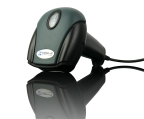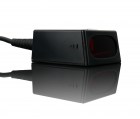A fiscal cash register is an electronic device used for recording turnover and the amount (of income tax and VAT) due on retail sales. Cash registers can be divided into two types based on their operation: cash registers operating through an autonomous system and those based on a computer.
A cash register with a standalone system is equipped with a cash register operation program and an application program. ECR or even POS devices contain a fully programmed PLU database, i.e. a list of numbers (codes) and names of goods with assigned letter symbols of PTU tax rates, prices and optionally bar codes. After the tax rates and commodity base have been programmed, the cash register allows sales. The cashier enters the PLU code of the product or the bar code (the employee can enter the code using a bar code reader), then the cash register finds it in the database and prints the items on the receipt. Completion of the transaction by the cashier registers in the cash register RAM memory the fact of sale and increases the gross amount counters. These counters can be read by the operator or remotely by means of e.g. a warehouse software. Cash registers of that type can keep stock levels in their memory and at the same time work online with a PC to update stock levels.
Cash registers with a computer-based system are divided into types, such as fiscal printer, POS terminal or computer cash register. At the moment, only the operation of fiscal printers needs to be explained, as in other types of cash registers it is their basic element. These devices are equipped with a few buttons in contrast to typical cash registers, where you will find a full keyboard. Sales are carried out with the use of an application program running on a PC and controlling a set of fiscal instructions included in the fiscal protocol, among others the printing of receipts, invoices or fiscal reports. Devices are usually connected to each other via RS-232/RS-422, USB or LAN port. The printer stores in its memory only abbreviations of commodity names assigned to specific tax rates, so the device does not require programming of the commodity database with only VAT rate values.















